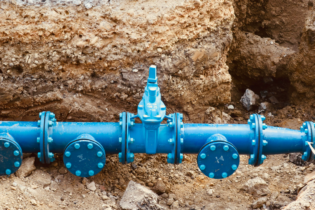Municipalities in South Africa can save substantial capital overhead costs when reducing pipeline leakages by opting to install a technologically-advanced VAG intelligent pressure management system, as opposed to investing in costly new infrastructure.
A leading fluid conveyance solutions supplier, Incledon, is able to assist municipalities in addressing the increasing challenge of water leakages in a cost-effective and environmentally-friendly manner, as the company plans to introduce the advanced German-engineered VAG intelligent pressure management system to the local market within the next two years. Incledon national product manager for civils, Kelly Wilson, highlights the fact that the majority of local authorities tend to increase investments in water infrastructure in an attempt to raise production capacities, rather than implementing programmes to reduce water losses. “Although investment in infrastructure increases production capacities, it does not permanently increase water production. This means that the structure of the pipeline system remains unchanged, placing enormous pressure on the valves that regulate the flows and pressures to maintain a constant supply of potable water,” he explains. “If those valves cannot be precisely controlled, high pressure differences in the pipes can ultimately lead to a collapse of the entire distribution system.” Wilson notes that the most cost-effective and environmentally-friendly solution is to reduce water losses in the distribution systems, by implementing the VAG intelligent pressure management system. “The systematic reduction of pressure in the main water supply system enables the water authorities to reduce water loss to sustainable economic levels.” The technologyThe VAG intelligent pressure management system is comprised of a plunger valve, a pressure sensor and a flow meter, which are installed at the feed point of the supply area. Wilson adds: “A programmable logic controller (PLC) records, processes and archives the measured sensor data needed to control the plunger valve. Depending on the supply system’s topography and consumption, the valve is moved into a position that optimally reduces the supply pressure, ultimately reducing the risk of new leaks occurring.”
Unlike butterfly or gate valves, which assume only shut-off functions in the pipeline, VAG plunger valves are designed to fulfil special control functions in the water supply systems. Due to the linear regulating characteristic, these valves guarantee best cavitation behaviour with lowest friction-loss, and can be used for the delivery of potable water at temperatures of up to 50°C. “The VAG plunger valve precisely regulates pressure in a piping system, and guarantees a constant supply of water at any time or condition in coordination with both flow rate and network pressure. It is available in nominal widths from DN 150 up to DN 1 600 and in pressures ranging from PN 10 to PN 40,” Wilson reveals. “Another essential advantage of the VAG plunger valve is its piston guiding, which is made of welded bronze for added strength. The piston-drive is connected by a stainless steel shaft to a gear box assembled to a connecting flange on the outside of the body.” Wilson points out that the VAG intelligent pressure management system can be operated via the following three approaches, depending on budgeting and engineering requirements:- Time-based modulation
This method is achieved by using a controller with an internal timer to change the set point of the fixed outlet control. Control is affected in time-bands in accordance with the demand profiles. This mode is effective for areas with stable demand profiles and head loss, and where cost is an issue.
- Flow or demand-based modulation
More water can be saved when the pressure follows the demand cycle for a specific period, such as a day, week, month or year. A flow meter in the main supply pipeline recognises current demand for water in the network. This value is sent to a computer, where an evaluated curve for this specific network is stored. This method is best-suited for areas with varying conditions, head loss and fire flow requirements. As demand is reduced primarily at night, pressures are reduced accordingly and, when demands peak, higher pressures are applied.
- Remote node-based modulation
With this mode, the pressure is measured directly in the network at a critical point, via a signal that is sent wirelessly to the control valve. This type of control is the most proactive, and is affected by connecting a remote pressure sensor to the valve controller. A remote sensor is usually placed at a critical point in the district, and the controller is set to change pressure at the valve to consistently maintain the desired pressure in the network system. This mode also smoothes system pressure at the weaker extremities; thereby, reducing the number of new pipe breaks.







